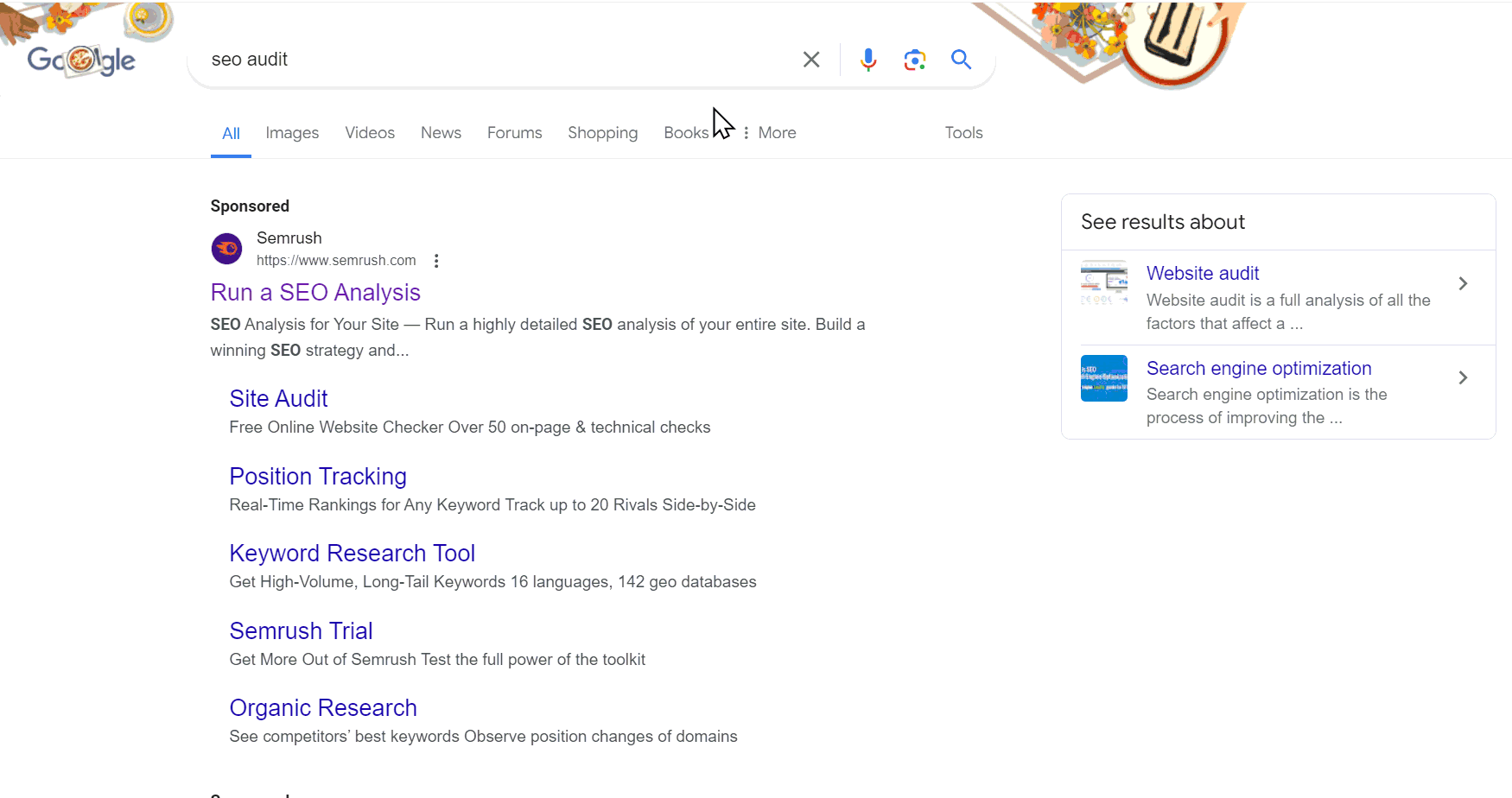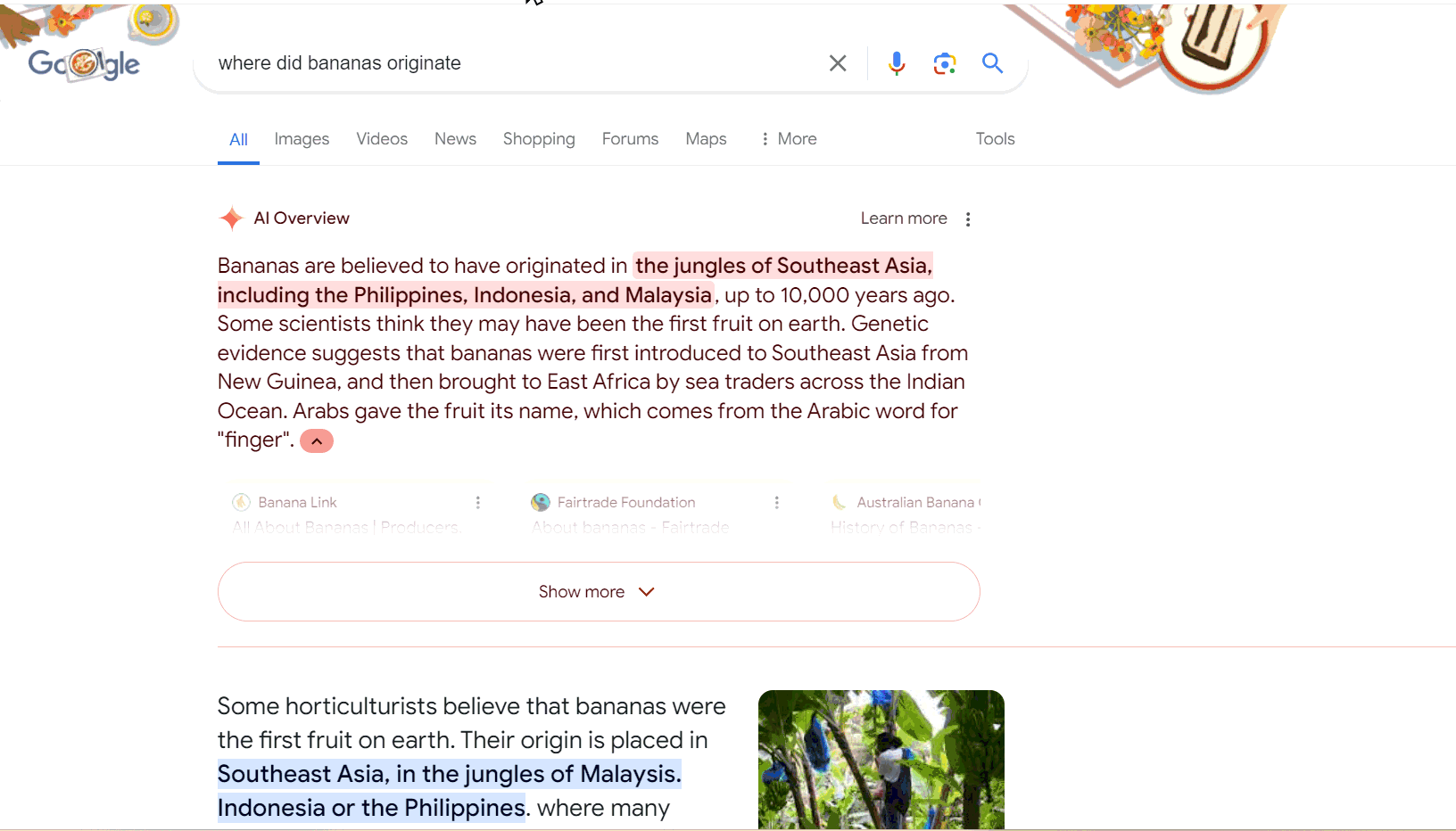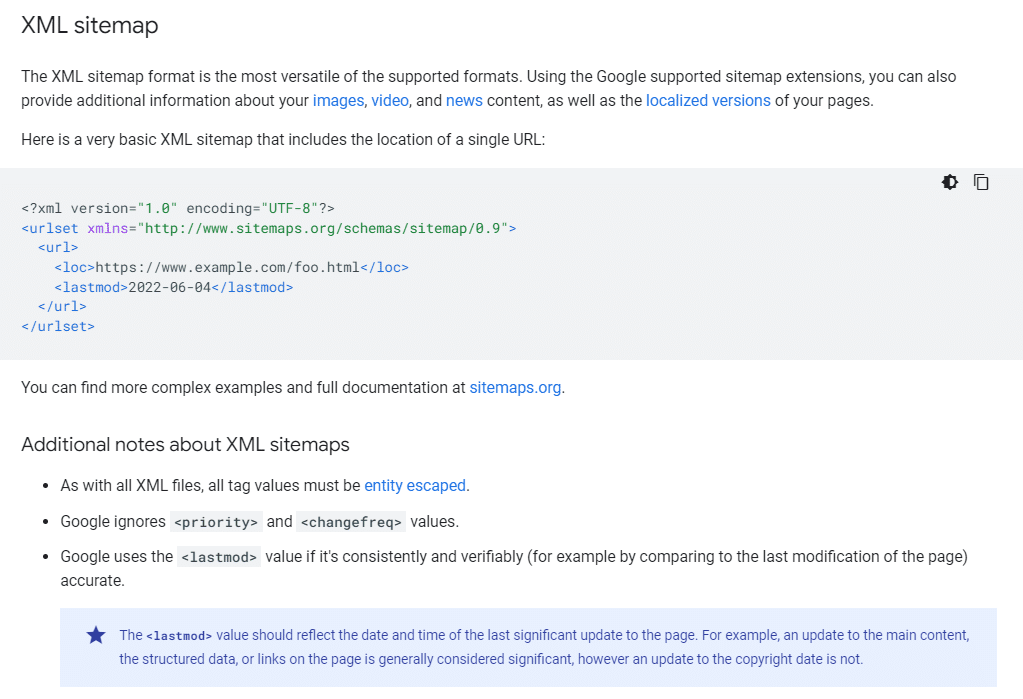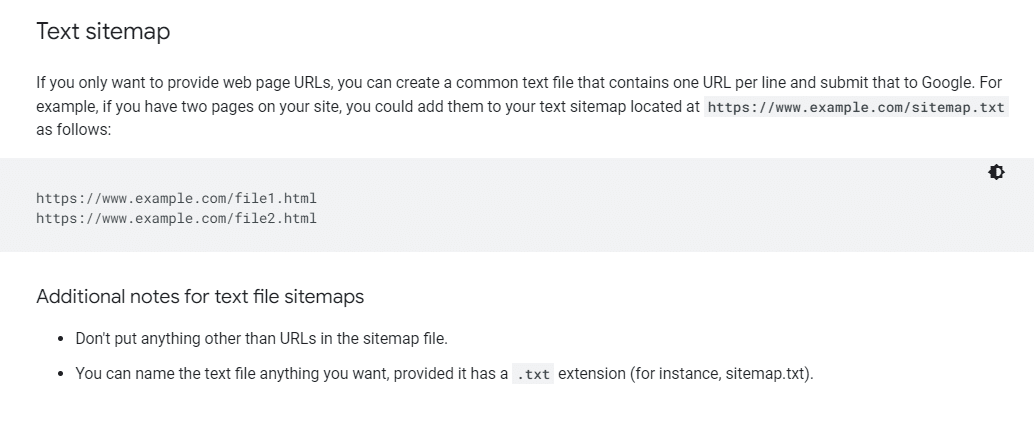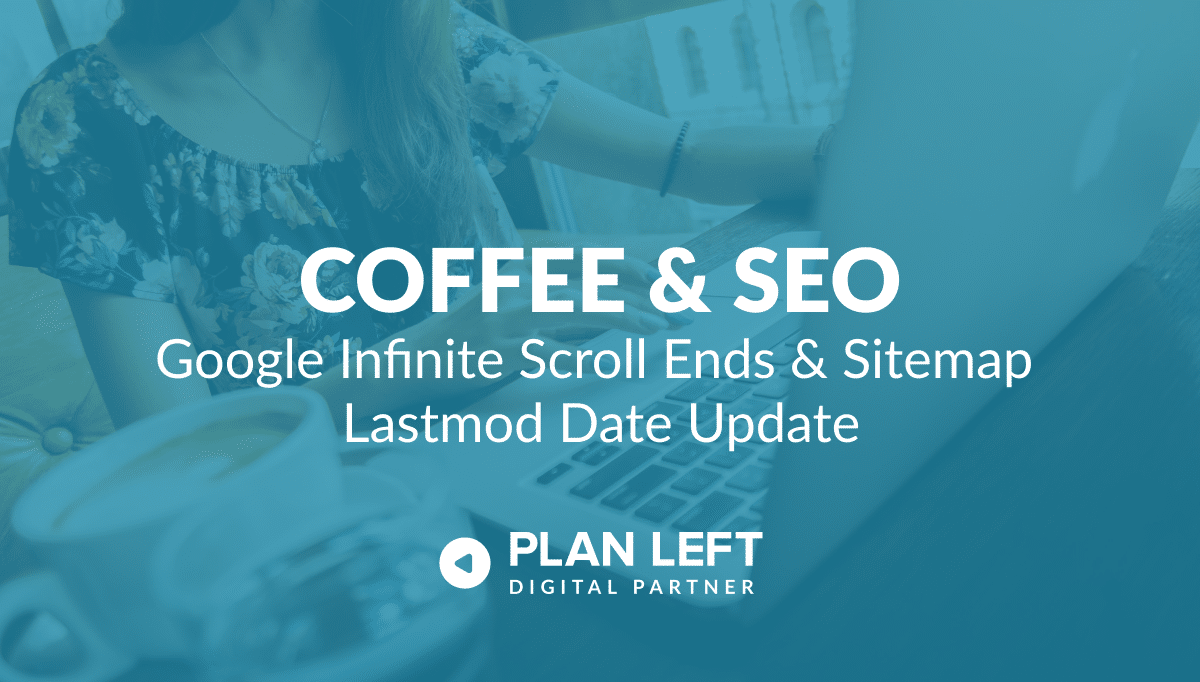
Google ends infinite scroll on desktops, and mobile is expected to transition soon, but what does this mean for organic search? Plus, there’s a new Performance Max and Standard Shopping campaign insights box, a Lastmod date (last modified date of content change) sitemap documentation update, and more in this week’s Coffee & SEO.
Infinite Scroll on Google Ending
Continuous scrolling on Google search results pages has already reverted to the paginated options at the bottom of the SERPs on desktop and mobile scrolling is expected to change at any moment.
Source: Plan Left Google Desktop Search
The concern around the change is the limited showing of organic search results on page one results. Specifically, AI Overviews (AIO) and ads take up the most real estate on page one of the search results, not allowing for more organic traffic visibility for users to access.
These are valid concerns, but when we explored them on the desktop, not every search result populated with AIO results. For example, the SEO Audit Checklist example in the GiF above did not return with an AIO, and considering ads, it is still populated with 10 organic search results.
Searching for something different, where did bananas originate, we did get the AIO result, but, again, even with the ads taken into account, we still had about 9 organic results as well.
Source: Plan Left Google Desktop Search
Impact On Organic Search
The impact and how negative this is on organic search depends on perspective. Even with continuous scrolling, there was a breaking point where the user would stop scrolling. Continue to create user-focused content that is written for your target demographics and follow best practices.
With the People Also Ask and Things to Know sections, you can get on page one results by creating content that speaks to your audience’s needs, answers their questions, and responds to their pain points.
Google Updates Guidelines for Beta Structured Data Carousels
Google updated the guideline section for the beta version of structured data carousels, specifically for the European Economic Area (EEA). This update is part of Google’s preparations for the Digital Markets Act (DMA), with the goal of improving the visibility of content related to travel, local, and shopping queries in search results. Currently, the beta feature is available only in the following EEA countries for both desktop and mobile:
- Germany
- France
- Czechia
- UK
Adding the Structured Data
The structured data needs to be applied to a summary or category page that lists multiple entities and links to detailed pages. The detailed pages themselves do not need to have the structured data markup. For example, a summary page might list the “Top hotels in Paris” and link to individual hotel pages.
Note that to qualify for this feature, websites are required to have a summary page with links to detailed pages. The summary page should contain structured data markup, but the detailed pages do not need it. Businesses based in or serving users in the EEA can apply using the forms provided by Google.
Source: New Search experiences in EEA: Rich results, aggregator units, and refinement chips
Performance Max and Standard Shopping Insights Box Being Tested By Google
Google is testing a new ads insights box and report that provides target Return on Ad Spend (tROAS) insights for Performance Max (PMAX) and Standard Shopping campaigns. This new feature offers advertisers new visibility into their ROAS performance.
Added Detail and Actionable Insight Improvements
For advertisers using Google Ads, particularly those managing large eCommerce clients, the new insights box and reporting offer a comprehensive view of campaign performance, giving way for better optimization of tROAS strategies. Here’s what we can expect from the new feature:
- Performance Evaluation – The insight box shows whether your actual ROAS is within the expected range.
- Visual Representation – It includes a graph displaying weekly ROAS averages, which also incorporates projected conversions.
- Historical Context – Google calculates the typical variation based on your campaign’s historical data.
- Goal Tracking – You’re considered on track to meet your goals when your target is within this typical variation.
- Balanced Approach – Google works to keep your overall conversion value per cost equal to the target ROAS you set, even though some conversion values may cost more or less than your target.
Overall, this is a win-win. More data and with improved reporting options will only help us as we look to build out our ad campaign strategies.
Watercooler Highlights
Lastmod date, which is used to help crawlers recognize recently updated content on your website by adding the Lastmod date on your sitemaps, got a documentation update by Google. This validates the importance of technical SEO efforts for an optimized website. Plus, Lead Crediting for Local Service Ads becomes automated with machine learning models Google has trained with advertisers in mind.
Lastmod Date Clarification Added to Sitemap Documentation By Google
Google updated its sitemap documentation to provide more clarity on the use of the lastmod date field. Lastmod, used correctly, directly improves the accuracy and usefulness of sitemap data, which can help search crawlers crawl your website and index content more efficiently. With this update, there are some key points worth calling out:
- Google added a note specifying that the lastmod value “should reflect the date and time of the last significant update to the page.”
- The documentation now clarifies what constitutes a significant update. Examples include changes to the main content, structured data, or links on the page.
- Google explicitly states that updates to elements like the copyright date are not considered significant and should not trigger a lastmod date change.
Source: Build and submit a sitemap
Why Is Google Clarifying Lastmod
This clarification comes after recent discussions about Google’s treatment of the lastmod field in sitemaps (which we addressed in a previous Coffee & SEO blog). This update emphasizes the need for website owners and digital marketers to be more precise in their use of the lastmod field, making sure it accurately reflects meaningful content changes. Google also made a small additional tweak to the text sitemap section of the documentation for further clarity.
Source: Build and submit a sitemap
It is also worth noting that Bing has also highlighted the importance of using the lastmod date field in their documentation. So, this is definitely worth investing time and energy into to help improve your technical SEO.
Google Automates Lead Crediting for Local Services Ads
July 2024, Google will roll out an automated lead crediting system for Local Services Ads. This new system is meant to streamline the process of receiving credits for poor-quality leads, giving businesses more time and attention on their core activities.
Machine Learning Models for New Lead Crediting Automation
In order to make this possible, Google has trained machine learning models to identify high-quality leads which have been discovered by the automated system. With this new update, Google will no longer support credits for “job type not serviced” and “geo not serviced” leads.
Additionally, the automated lead crediting system will not apply to the healthcare industry or advertisers in the European Economic Area (EMEA) and it is also being recommended that service areas, job types, and categories should be refined to attract more suitable leads.
How This Helps Advertisers
The goal is to make the process more efficient and equitable for all advertisers by offering the following:
- Equitable Ad Credits – The automated system will ensure that all invalid leads are credited, even those that advertisers might not have disputed. This addresses the issue where some advertisers were disputing a high percentage of leads while others were not disputing any despite being eligible for credits.
- Time Savings – By eliminating the need for manual disputes, the automated system saves businesses time and resources, which is particularly beneficial for those with limited staff.
The expectation is that advertisers will receive the same or more lead credits on average, which will still be applied to account balances within 30 days, although the original lead charge will still appear on invoices.
Explore Latest Posts
The Hidden Cost of Marketing Agencies: Why Building In-House Capabilities Matters Marketing agencies solve an immediate problem: you need marketing ... read more
December 23, 2025
How to Know Exactly Which Marketing Activities Drive Results You're investing in marketing. Social media posts go out regularly. Email ... read more
December 18, 2025
The Entrepreneur's Guide to Creating a High-Ticket Flagship Offer Most businesses are built on a foundation of scattered services, multiple ... read more
December 16, 2025
Essential Strategies for Entrepreneurs
Get Actionable Business Insights & Marketing Tips
Our newsletter delivers real-world strategies from entrepreneurs who’ve been exactly where you are.
Sign up now for:
- Actionable growth strategies that work
- Insider tactics for attracting top talent
- Real-world case studies from successful founders
- Emerging tech trends that drive innovation
- Pragmatic marketing approaches for visionary leaders

